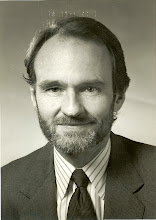We predicted early Q4 that economic reality ahead would broach expectations, especially payroll and discretionary consumer activity. That has been the result.
Some recent signals have appeared to contradict our view: 1) The last Payroll number was not especially buoyant. 2) A recent consumer confidence report (Conference Board) was lower. 3) Home prices fell again. This information is useful perhaps to set a better price or exploit crowd behavior but not useful as a guide.
Thus, clients are to remain anchored: 1) The last payroll result will very likely be revised higher. 2) The correlation between what consumers tell pollsters, and what they are about to do, is poor. We know from experience that consumers will tell the Conference Board that the world is about to end while on their way to buy a new b b’cue or maybe even a new car! 3) Lower home prices won’t hinder a recovery. Most economists exaggerate the importance of housing to overall wealth, and to spending. Anyway, GDP growth depends on new production. In November, housing starts were up 3.9% and new homes sales were up 5.5%.
Recent unemployment claims fell by 34M for the week ended Dec/25, vs expectations for no change; this is the lowest level of layoffs since July/08. This result is in line with our prediction that analysts have underestimated employment, and by extension, consumer activity.
Overlooked by many is that manufacturing activity has expanded for 17 consecutive months as of Dec following 18 consecutive months of decline. Why? Part we know is due to exports but - key - a growing share past two quarters is tied to domestic demand. The latest survey for the Chicago region blew through expectations, the fastest pace since July/88. The demand for manuf goods indicates that customers are buying again. Due to lean inventories production has improved with demand, as will hiring, as will income, then spending.
Indeed, retailers are reporting the best demand since before the recession began (Dec/2007). Even luxury retailers such as Neiman Marcus, Saks and Nordstrom have seen a surge in traffic and sales (aided by the reality of another two years of Bush tax cuts).
Clients dependent on discretionary spending are to plan for an expansion of that activity on the order of 20% by mid-year, 2011. Business planners are best advised to account for this reality.
Robert Craven
Saturday, January 1, 2011
Subscribe to:
Post Comments (Atom)

No comments:
Post a Comment